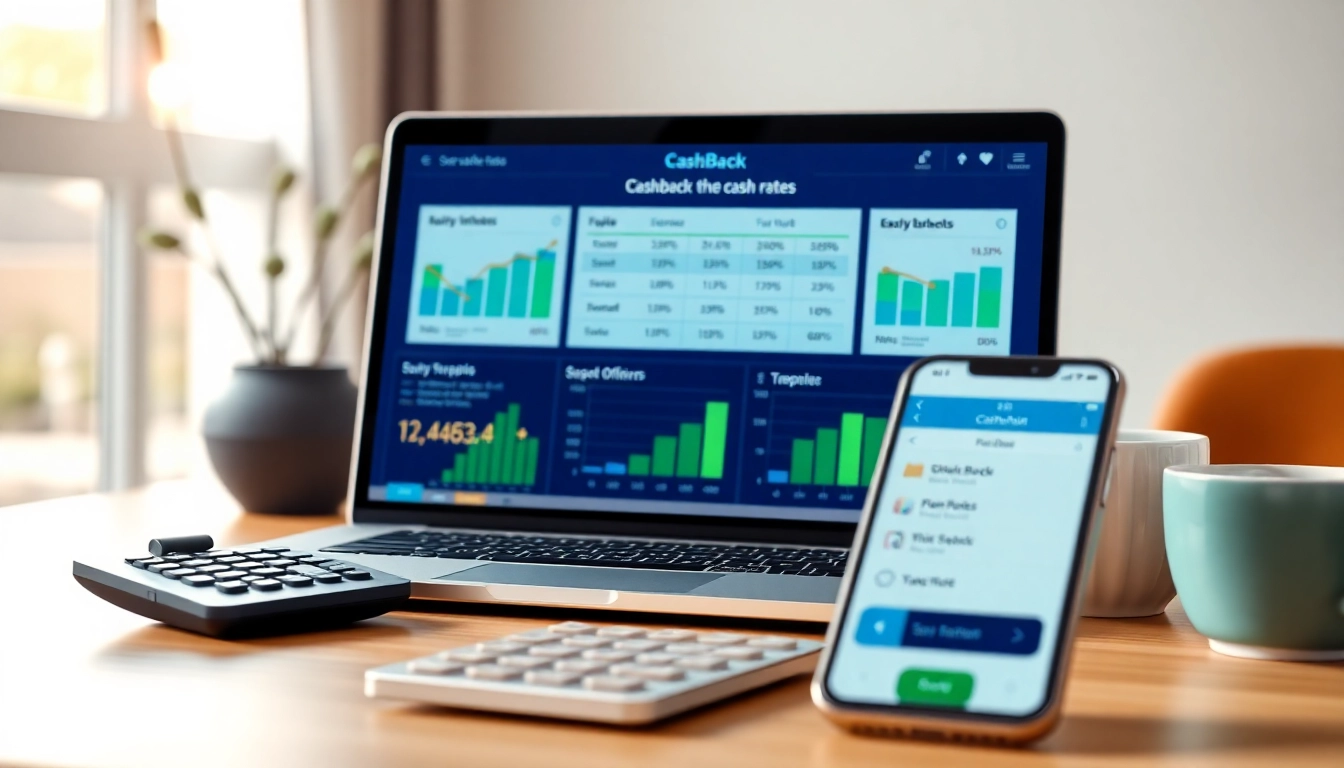Understanding Cashback Rates
What are Cashback Rates?
Cashback rates represent the percentage of money returned to the consumer based on their spending at participating retailers or through certain payment methods, typically credit cards. When a user makes a purchase, a portion of the amount spent is credited back to their account, effectively reducing the total cost of the transaction. This incentive not only encourages consumer spending but also rewards loyalty to specific brands or retailers.
How Cashback Rates Work
Cashback operates on a straightforward principle. For example, if a cashback offer is 5%, then for every dollar spent, the consumer earns five cents back. The mechanics behind cashback rates vary depending on the source:
- Credit Cards: Many credit card companies offer cashback on purchases, often categorized by spending type like groceries, gas, or dining. Consumers may need to meet specific spending thresholds to qualify for these rates.
- Retailers: Some stores provide their own cashback programs. Customers might receive a percentage back based on their total purchase, sometimes incentivized through special promotions.
- Cashback Websites: Various platforms allow users to compare cashback rates from different retailers or offers, ensuring they maximize their potential savings when shopping online.
Types of Cashback Offers
Cashback offers can take several forms, each appealing to different shopping behaviors:
- Flat-Rate Cashback: This type of cashback offers a steady percentage back on all purchases, making it easy for consumers to calculate their rewards.
- Tiered Cashback: These offers provide varying rates depending on the spending category. For example, a card might offer 1% on all purchases but increase to 3% on groceries.
- Rotating Categories: Some programs change their cashback categories every few months, challenging consumers to adapt their spending to maximize earnings.
- Bonus Offers: Temporary promotions that provide higher cashback rates for specific retailers or periods can also attract bargain hunters.
Benefits of Comparing Cashback Rates
Maximize Your Savings Potential
By taking the time to compare cashback rates, consumers can uncover opportunities to save significantly on regular purchases. Choosing the right credit card or cashback site can translate to hundreds of dollars saved annually, especially for prolific shoppers or families who regularly make substantial purchases.
Identify the Best Offers
Cashback offers are not static; they fluctuate based on retailer promotions and financial institutions’ strategies to attract clients. By comparing rates from various sources, consumers can find the most advantageous deals tailored to their preferences. This includes timing purchases with high cashback offers or selecting cards that benefit their spending habits.
Staying Informed with Rate Changes
The market for cashback incentives is competitive and constantly evolving. Regularly reviewing and comparing cashback rates aids consumers in staying informed about new opportunities. This vigilance ensures they do not miss out on promotions, enabling smarter financial decisions and strategic planning for larger purchases.
Tools for Comparing Cashback Rates
Online Comparison Platforms
Numerous online platforms are dedicated to helping consumers compare cashback offers. These tools often aggregate data from multiple retailers and financial institutions, allowing streamlined comparisons of cashback rates and offers. Users can filter results based on specific criteria, ensuring that they find the best available options tailored to their needs.
Mobile Apps for Real-Time Updates
Several mobile applications notify users about updated cashback rates in real time, providing alerts for bonus offers or changes in cashback percentages. These apps can help users manage their purchases and optimize their benefits on the go – making it easy and convenient to stay informed while shopping.
Utilizing Financial Blogs and Resources
Financial blogs and resources provide insightful analyses and comparisons of cashback offers. Many experts continuously test and evaluate different cashback programs, sharing their findings and recommendations. By following trusted sources, consumers can gain insight into trends and strategies that may enhance their savings.
Factors to Consider When Comparing Cashback Rates
Commission Structures and Fees
Understanding how cashback programs generate revenue is crucial. Some programs charge fees that might diminish the overall cashback value. Whether it’s annual fees for credit cards or service charges on cashback websites, these costs need to be weighed against the potential benefits to evaluate the real value of an offer.
Expiring Offers and Promotions
Timing plays a pivotal role in cashback offers. Retailers frequently introduce temporary deals. If a cashback offer is set to expire soon, consumers might need to make purchasing decisions more quickly than they prefer. Being aware of expiring promotions can help users capitalize on short-term spikes in cashback rates.
Category-Specific Cashback Options
Different cashback programs target specific spending categories, such as travel, dining, or retail. Understanding one’s shopping habits is essential; for instance, a frequent traveler might favor a card offering higher rewards in airline bookings, while a daily commuter might benefit more from incentives related to fuel purchases.
Case Studies: Successful Cashback Strategies
Analyzing User Experiences
Several case studies illustrate how consumers have strategically optimized their cashback rewards. Take a scenario where a user regularly uses a credit card with a high cashback rate on groceries and gas. By aligning spending with the card’s strengths, this person could maximize their earnings, leading to significant annual savings.
Calculating Overall Savings
Calculating the total savings from various cashback offers can be complex yet insightful. Consumers can utilize spreadsheets or dedicated applications to visualize their cashback earnings over time. Monitoring spending across categories can reveal opportunities for optimization—enabling shoppers to identify patterns that may lead to increased cashback earnings.
Long-Term Strategies for Consistent Benefits
Implementing long-term strategies involves not just leveraging cashback offers but also planning purchases with future promotions in mind. Joining loyalty programs that link cashback benefits can create a compounding effect of returns. By combining cashback strategies with informed spending practices, consumers are more likely to see consistent benefits over time.
